In other words, Manager A is tied to the "chase demand" strategy, and his counterpart, Manager B in the adjacent office, is locked into the "level capacity" strategyWith the level strategy, production remains at a constant level in spite of demand variations In companies that produce to stock, this means that finished goods inventory levels will grow during low demand periods and decrease during highLag strategy is a conservative method of capacity planning that ensures your costs are as low as possible The potential downside to this strategy is that it can create a lag in the delivery of products or services to customers, which is where the name comes from
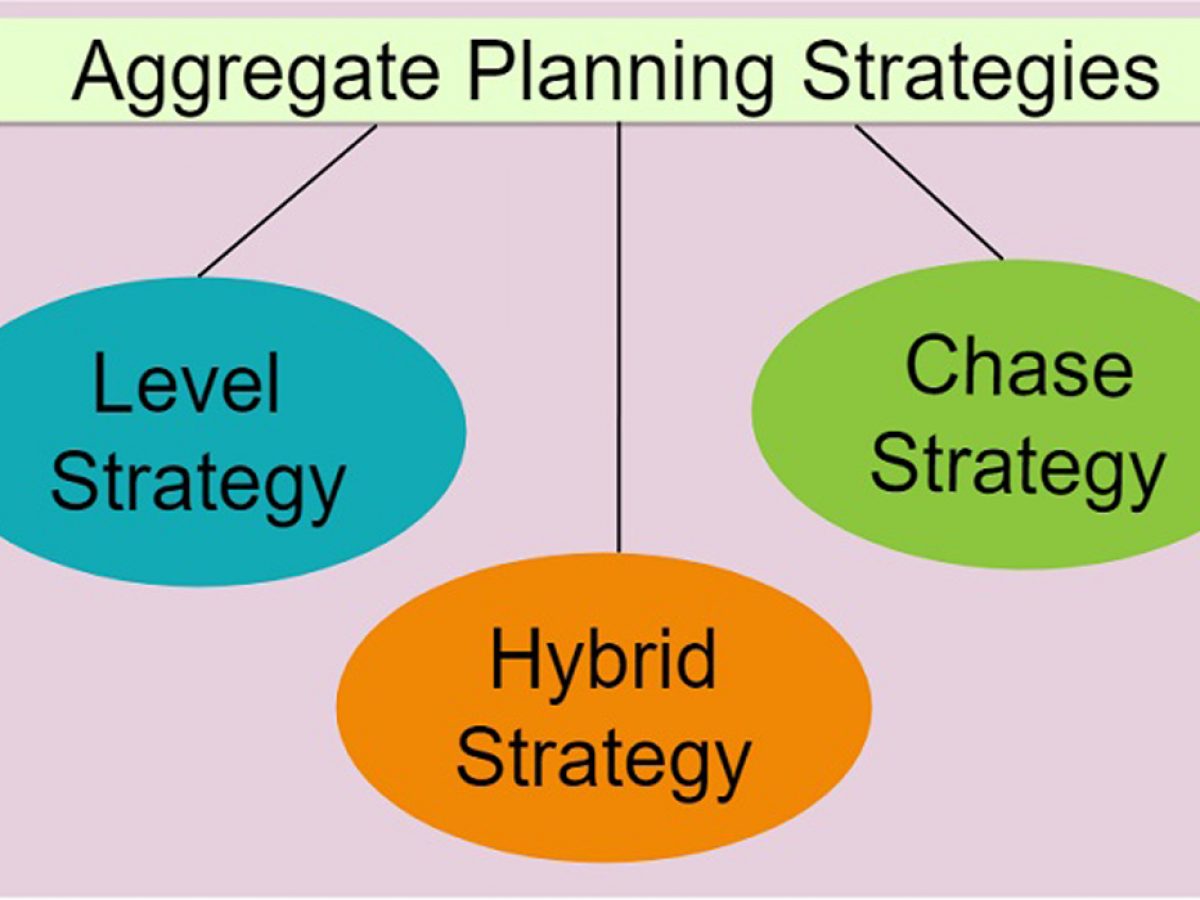
What Is Aggregate Planning 3 Strategies For Aggregate Production Planning
What is level capacity strategy
What is level capacity strategy-Strategic thinking is defined as the individual's capacity for thinking conceptually, imaginatively, systematically, and opportunistically with regard to the attainment of success in the future Strategic thinking is not the same thing as critical thinking Strategic thinking is better thought of as a style of thinking and not confused with organizational techniques or processesUp to10%cash backThe use of a level strategy means that a company will produce at a constant rate regardless of the demand level In companies that produce to stock, this means that finished goods inventory levels will grow during low demand periods and decrease during high demand periods
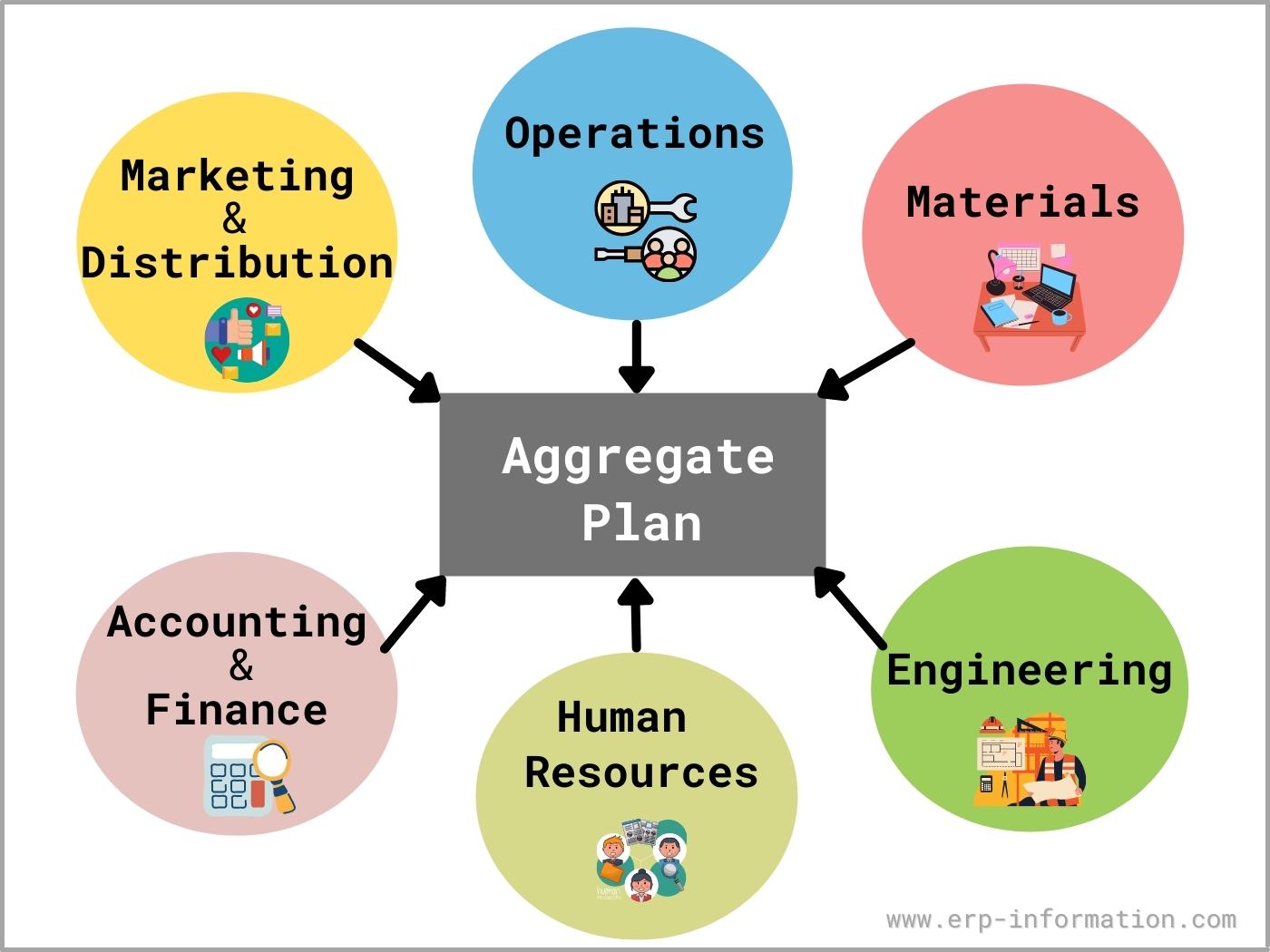



What Is Aggregate Planning 3 Strategies For Aggregate Production Planning
The level capacity strategy, the focus is on the process where product output remains at a somewhat fixed level and increases/decreases in demand are satisfied through strategic decisions of utilizing inventory (maintain buffer stock), outsourcing and backorders In comparison to level capacity strategy is adjusting capacity to followCapacity development responsibilities under one umbrella to tackle some of the systemic in order capacity constraints and address new capacity emanating from the new programme elements needs This CD Strategy provides a framework to coordinate and implement CD in a systematic and efficient mannerCapacity strategy is an approach to increasing and decreasing business capacity to meet demand Capacity includes things like labor and equipment that can be scaled to increase business output The following are common types of capacity strategy
Strategies for Managing Capacity Capacity management tools and methodologies vary, ranging from manually compiled performance spreadsheets to specially compiled hardware or software that is designed to produce detailed insights on the functioning of computing componentsThis definition focuses on alpha generation at the margin, identifying capacity as the AUM after which a fund earns alpha below a minimum acceptable level on an additional dollar invested The alpha threshold represents the minimum alpha required by investors to cover the management fee and compensate for active riskCapacity planning is a strategic process whereby a company determines what level of capacity it will need to satisfy the level of demand for
The chase strategy has the highest peak capacity requirement This means that facilities, both production and warehousing, will need to be larger than the other two strategies would require In addition, those facilities will not be 100% fully utilized, except for those rare occasions when you are at peak capacityLEVEL STRATEGY A level strategy seeks to produce an aggregate plan that maintains a steady production rate and/or a steady employment level In the context of the problem posted by you following the level strategy means incurring additional subcontracting costs at least twice This is to offset the shortfall in production because of the levelAQA, Edexcel, OCR, IB Capacity utilisation is a measure of the extent to which the productive capacity of a business is being used It can be defined as The percentage of total capacity that is actually being achieved in a given period Revision Video Calculating Capacity Utilisation Revision Video Capacity Management



2




Common Types Of Corporate Strategies Boundless Management
Aggregate planning is a proven technique that brings an element of foresight and stability into manufacturing It helps the management to achieve the longterm objectives of a company The importance of aggregate planning include Creates a satisfied and happy workforce Reduce changes in the levels of the workforceTypes of Corporate Level Strategy – Top 2 Types Growth Strategy and Diversification Strategy Corporate level strategy addresses the entire strategic scope of the firm It is a "big picture" view of the organisation and includes deciding in which, product or service markets to compete and in which, geographic regions to operateJohn Spacey, Capacity management is the process of planning the resources required to meet business demands This includes capacity forecasting, planning, monitoring and performance analysis This can happen at three levels in an organization




6 There Are Different Definitions Of Capacity What Chegg Com




4 Population Health Strategies That Drive Improvement
Alternative Capacity Management Strategies• Level capacity (fixed level at all times)• Stretch and shrink – offer inferior extra capacity at peaks (eg bus/metro standees) – vary seated space per customer (eg elbow room, leg room) – extend/cut hours of service• Chase demand (adjust capacity to match demand) – schedule downtimeOperations management can be defined as the planning, scheduling , and control of the activities that transform inputs into finished goods and services In other words, it is 'a field of study that focuses on the effective planning , scheduling, use, and control of a manufacturing or service organisation through the study of concepts fromCapacity planning itself has different meaning to individuals at different levels within the operations management hierarchy D The definition of capacity, in an operations management context, makes a clear distinction between efficient and inefficient use of capacity




Solved 11 Based On Capacity Demand Options At Their Di Chegg Com




Quick Guide How To Write A Strategic Plan Smartsheet
United Nations definition of capacity development Capacity development is the process by which individuals, organizations, At the individual level, capacitybuilding involves establishing the conditions sound public capacity strategy have been described as follows "The benefitsWhen it comes to scheduling your labor force, there are two primary ways to schedule The first is called level scheduling, where you try and maintain a steady workforce with a steady schedule The second is the chase strategy, where you maintain a level workforce and increase your workforce as demand increasesFunctional level strategies will be specific and will apply to a variety of functional areas (departments) For example, building on the diversification example, the functional level strategies that support that business level strategy might be R&D Redesign product Marketing Implement new advertising plan
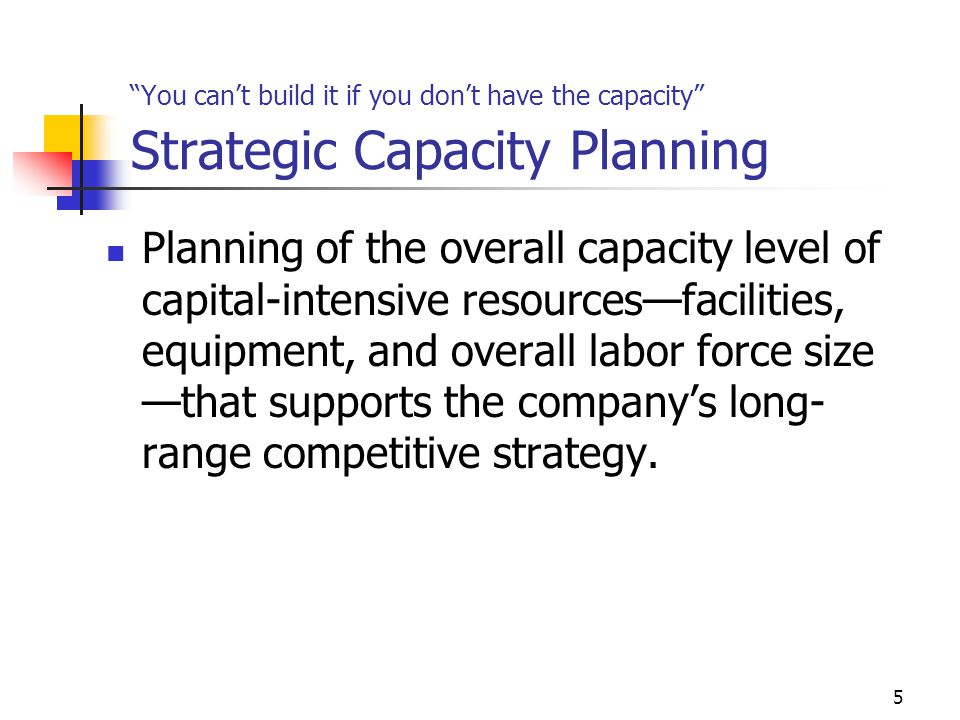



Strategic Capacity Planning Aggregate Planning Ppt Video Online Download
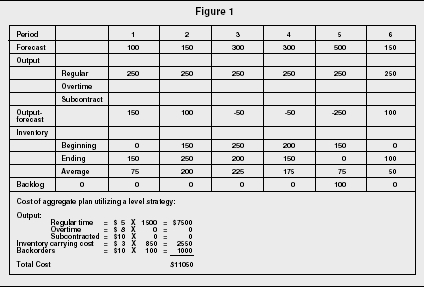



Aggregate Planning Strategy Organization Levels System Examples Model Type Company System
At the institutional level we help organizations strengthen their vision, strategy, structure and performance management practices Our institutional capacitydevelopment strategies make use of a range of tools and approaches, and we select strategies that are consistent with the objective, resources available and time frameAn aggressive investment strategy is a means of portfolio management that attempts to maximize returns by taking a relatively higher degree of riskLevel Capacity Plan Definition An approach to mediumterm capacity management that attempts to keep output from an operation or its capacity constant, irrespective of demand Operations Management by Nigel Slack, Alistair BrandonJones, Robert Johnston Level Capacity Plan Explanation
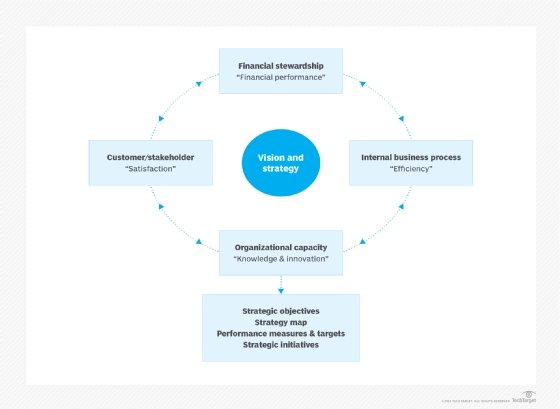



What Is Strategic Management And Why Is It Important
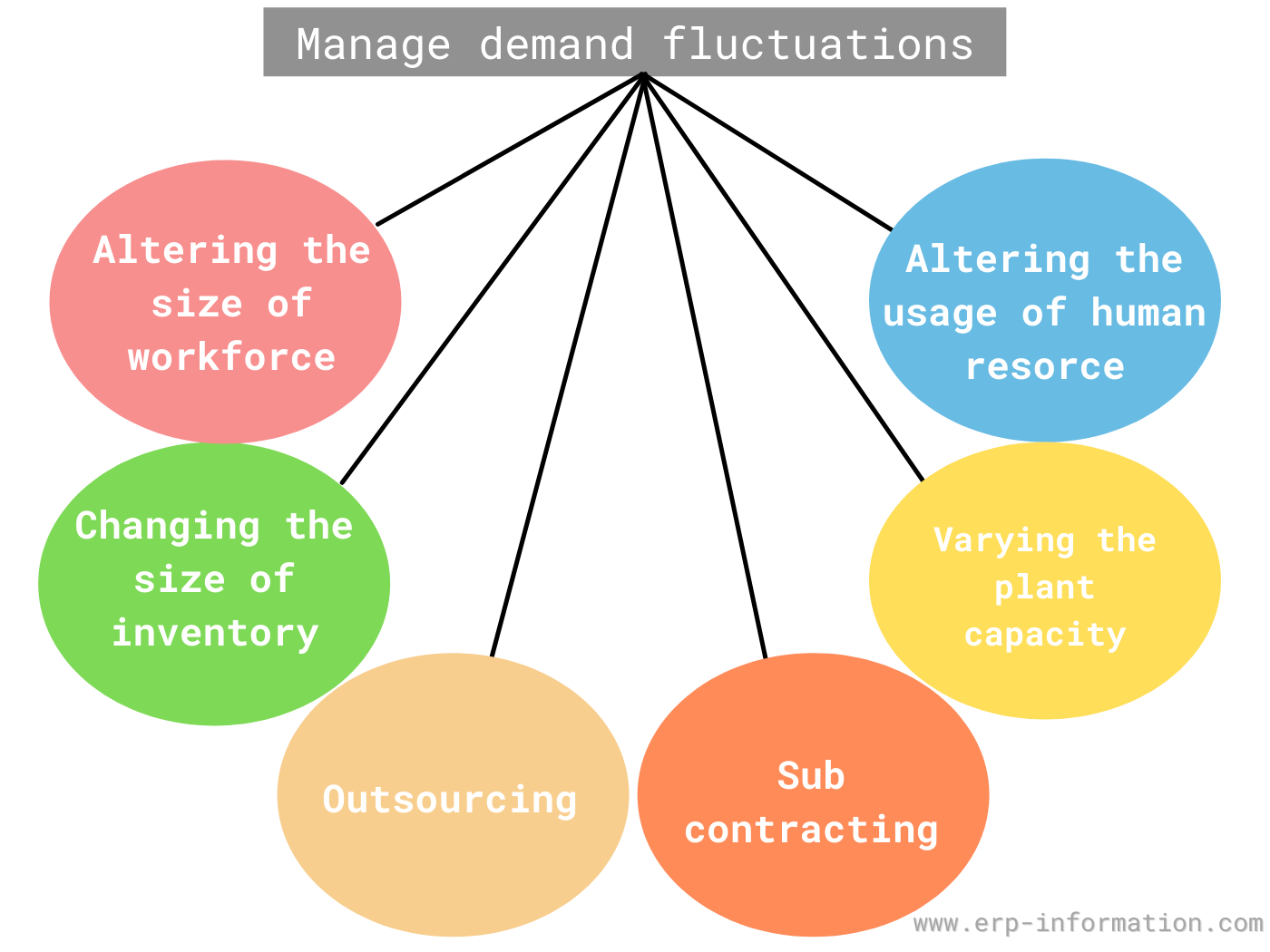



What Is Aggregate Planning 3 Strategies For Aggregate Production Planning
CDC's optimization strategies for PPE offer a continuum of options for use when PPE supplies are stressed, running low, or exhausted Contingency and then crisis capacity measures augment conventional capacity measures and are meant to be considered and implemented sequentiallyAs PPE availability returns to normal, healthcare facilities should promptly resumeEffective capacity is the optimum production level under predefined job and workschedules, normal machine breakdown, maintenance, etc Medium Term Capacity The strategic capacity planning undertaken by organization for 2 to 3 years of a time frame is referred to as medium term capacity planning Short Term Capacity The strategic planningCapacity expansion is a credible deterrent strategy if capacity costs are very high Otherwise, if the cost of adding capacity is low or capacity can be utilized for other purposes, it would be relatively easy for rivals to enter For example, DuPont used capacity expansion to increase its market share in the titanium dioxide market
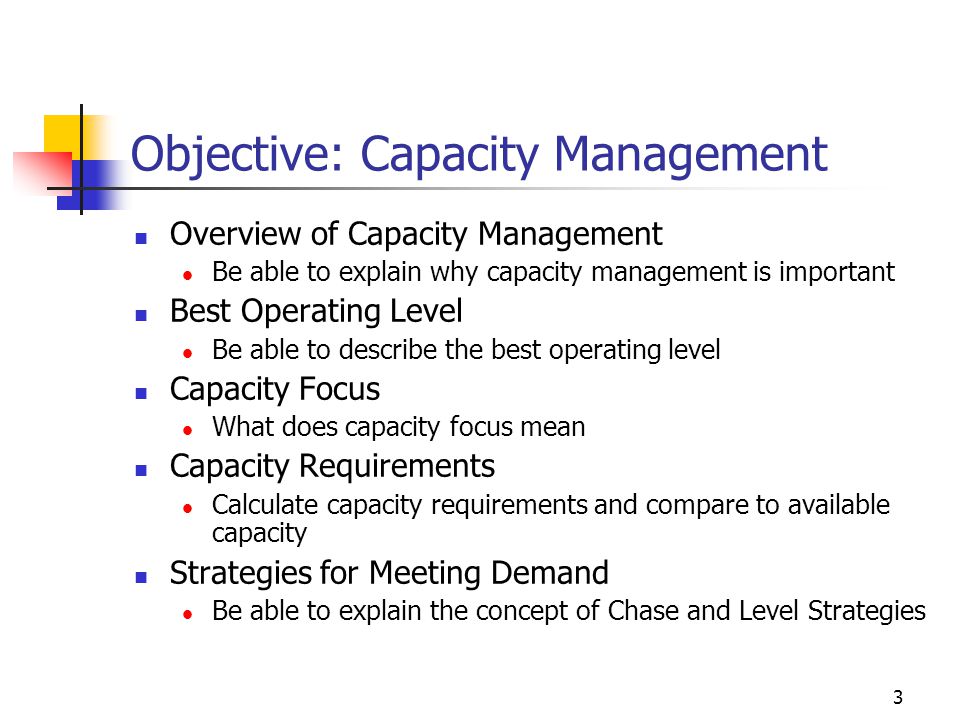



Strategic Capacity Planning Aggregate Planning Ppt Video Online Download
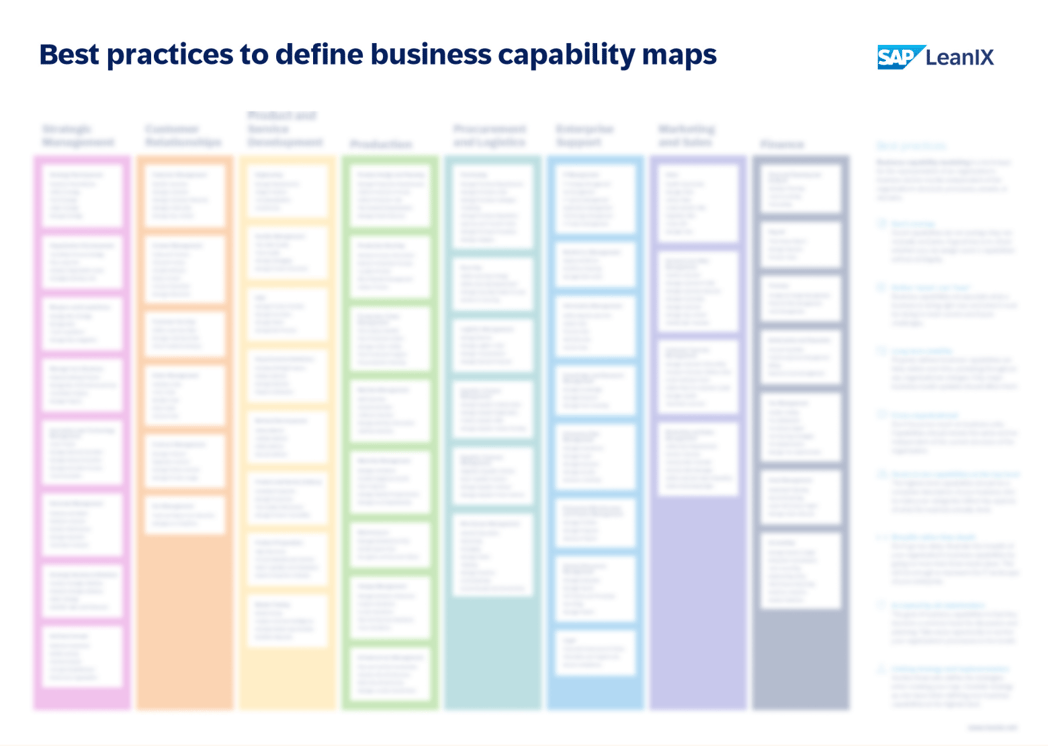



Business Capability Map And Model The Definitive Guide Leanix
Chapter 7 Capacity Planning and Management Learning Outcomes After reading this chapter you should be able to • Define and measure capacity and appreciate the factors that influence it • Assess the difficulties of matching capacity to demand • Evaluate and apply the different strategies for matching capacity with demand in the short,Capacity planning is described as a tool to minimize the discrepancy between the capacity of a business entity and customer demands Demand for capacity is variable as it is based on changes in production output of an existing product or in the production of a new productTheoretical capacity is the amount of throughput that could be attained if a production facility were able to produce at its peak efficiency level with no downtime Theoretical capacity should not be used for planning or bonus compensation purposes, since it is nearly impossible to attain in practice Many factors can interfere with the ability




Competitive Advantage Tutor2u



2
Level Capacity Plan The inventory size is varied keeping the workforce size and utilization of work constant The number of workers (working size) is kept constant throughout the time period under consideration During months of low demand the excess units required over the units produced are taken from the inventoryAggregate planning is a marketing activity that does an aggregate plan for the production process, in advance of 6 to 18 months, to give an idea to management as to what quantity of materials and other resources are to be procured and when, so that the total cost of operations of the organization is kept to the minimum over that period The quantity of outsourcing,An approach to aggregate planning that attempts to match supply and output with fluctuating demand Depending on the product or service involved, the approach can incur costs by the ineffective use of capacity at periods of low demand, by the need to recruit or lay off staff, by learningcurve effects, and by a possible loss of quality The advantages include low storage




Capacity Planning Everything You Need To Know Opensense Labs
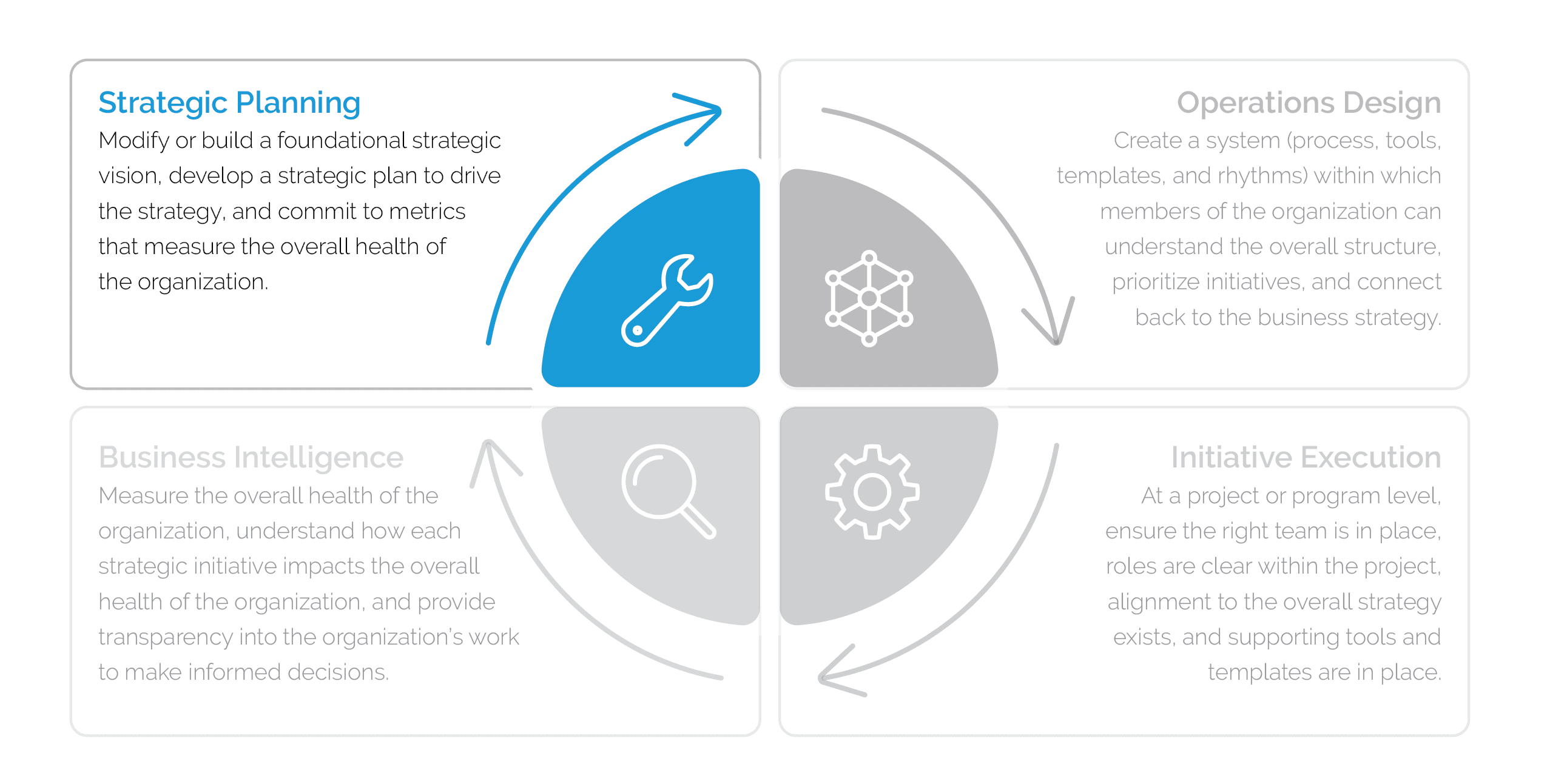



6 Elements Of Effective Strategic Planning
The goal of strategic capacity planningis to achieve a match between the longterm supply capabilities of an organization and the predicted level of longterm demand 3 Capacity Decisions are Strategic 1 Capacity decisions have a real impact onThat sets the overall scope for capacity development The organizational level refers to the internal structure, policies and procedures that determine an organization's effectiveness It is here that the benefits of the enabling environment are put into action and aOne of the strategic choices that a firm must make as part of its manufacturing strategy There are three commonly recognized capacity strategies lead, lag, and tracking A lead capacity strategy adds capacity in anticipation of increasing demand A lag strategy does not add capacity until the firm is operating at or beyond full capacity




Everything About Capacity Planning Strategies Its Benefits



1
Use break even analysis to evaluate capacity alternatives This module examines how important strategic capacity planning is for products and services The overall objective of strategic capacity planning is to reach an optimal level where production capabilities meet demand Capacity needs include equipment, space, and employee skillsCapacity Planning Approaches There are four principle methods to approach capacity planning Each method is based on reacting to or planning for market fluctuations and changing levels of demand These capacity planning strategies are match, lag, lead, and adjustment Match
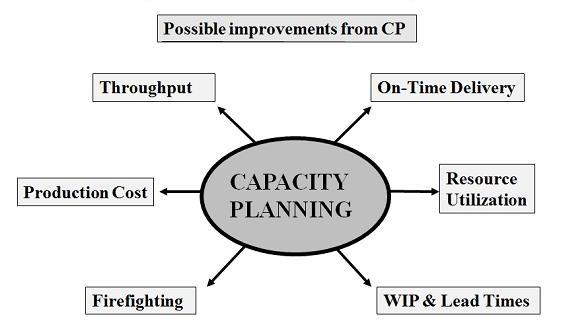



Concept Of Capacity Planning And It S Procedure Importance Management Study Hq




Increase Manufacturing Production Capacity Vorne




Capacity Utilization Manufacturing Kpi Examples Sisense



1
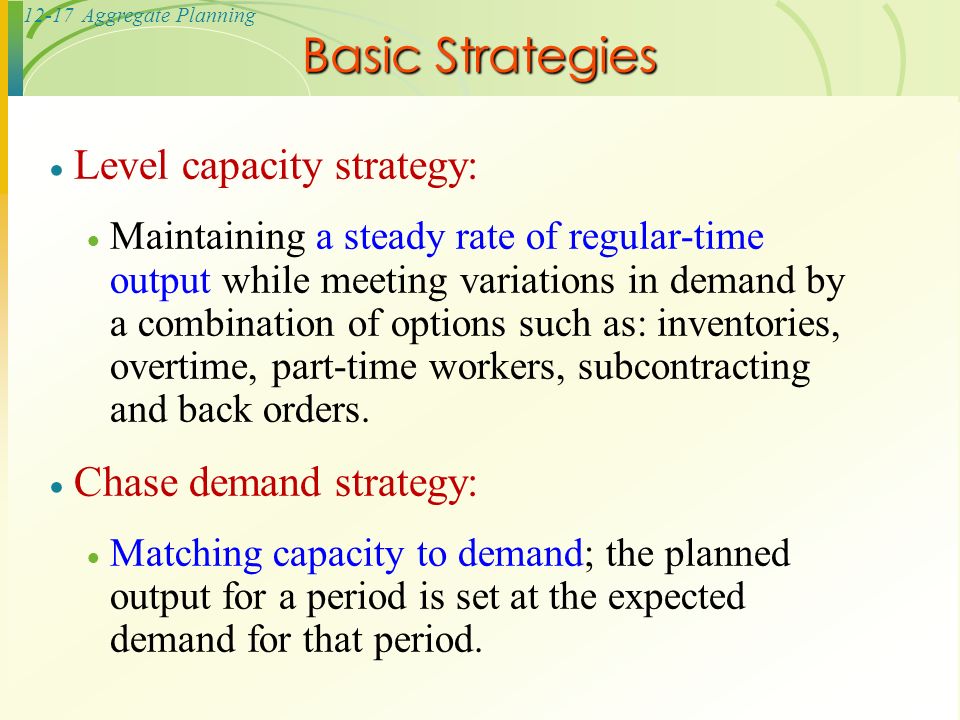



Operations Management Ppt Video Online Download
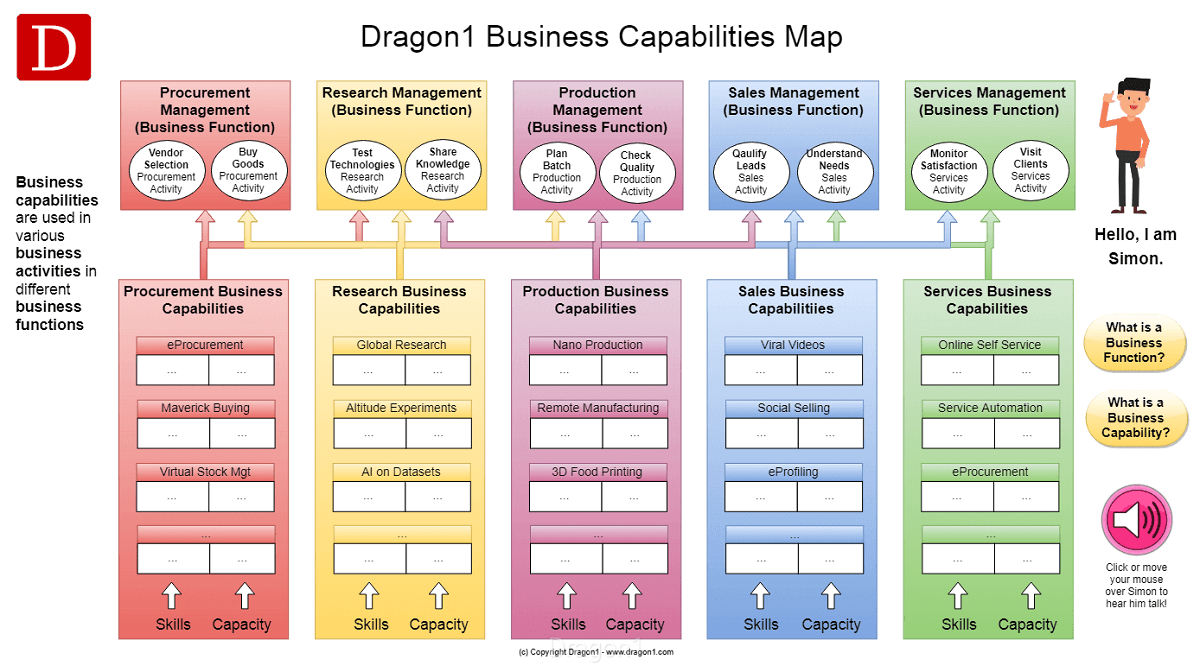



Capability Definition Dragon1
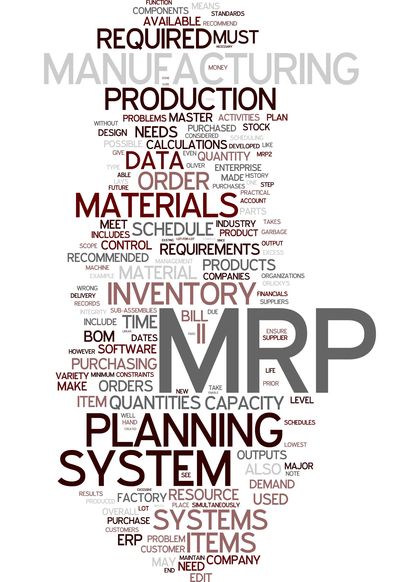



Capacity Planning Organization System Examples Definition System Long Term Capacity Planning




What Is Capacity Planning Examples Types Optimoroute




3 Types Of Capacity Planning Strategies Valq
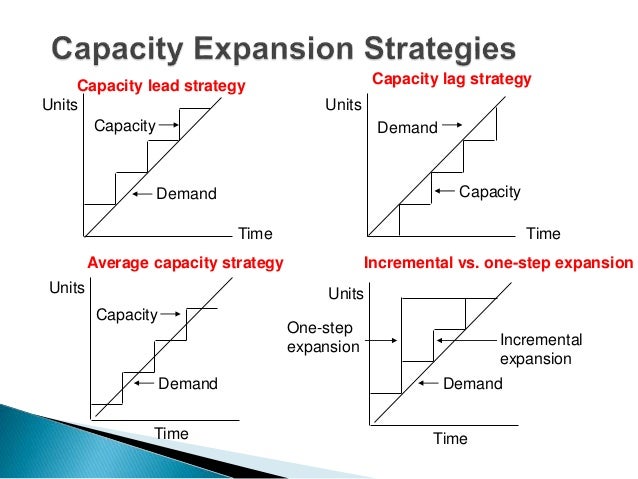



Capacity Management
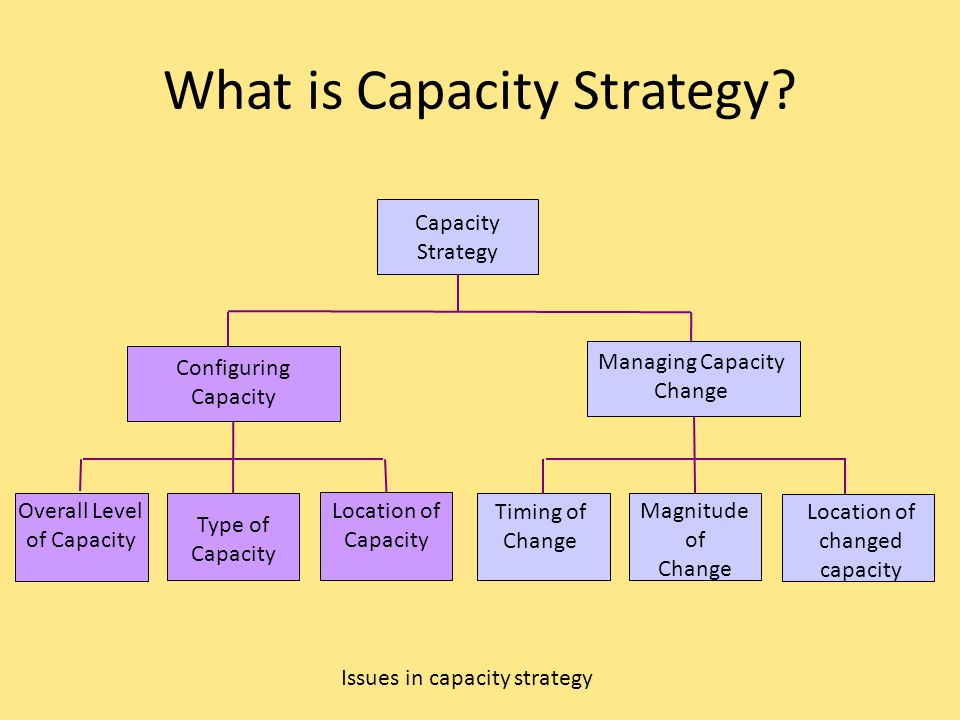



Operations Strategy Capacity Strategy Ppt Video Online Download




What Is Strategic Intent Apm




3 Types Of Capacity Planning Strategies Valq




What Is Aggregate Planning 3 Strategies For Aggregate Production Planning




3 Types Of Capacity Planning Strategies Valq



Strategy And Governance Eitbok




Capacity Planning Meaning Classification And Its Goals



1
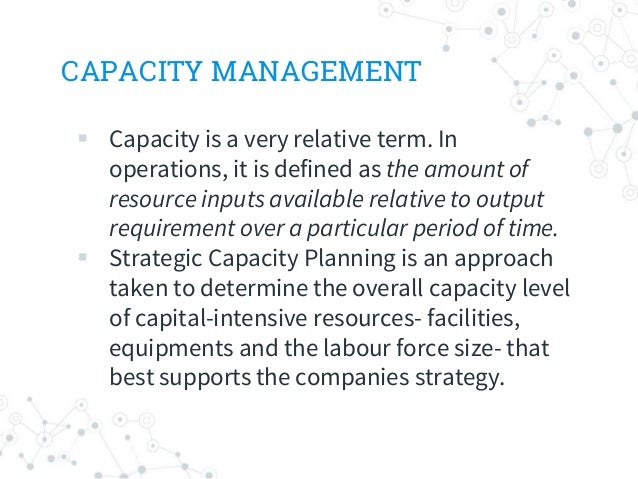



Capacity Management
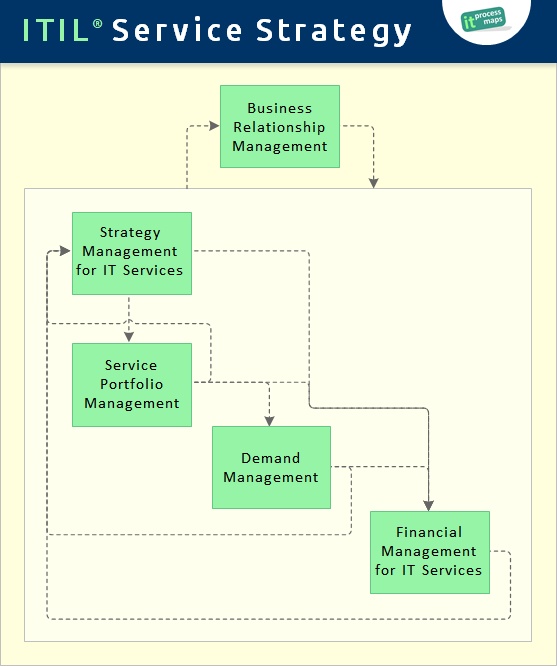



Itil Service Strategy It Process Wiki
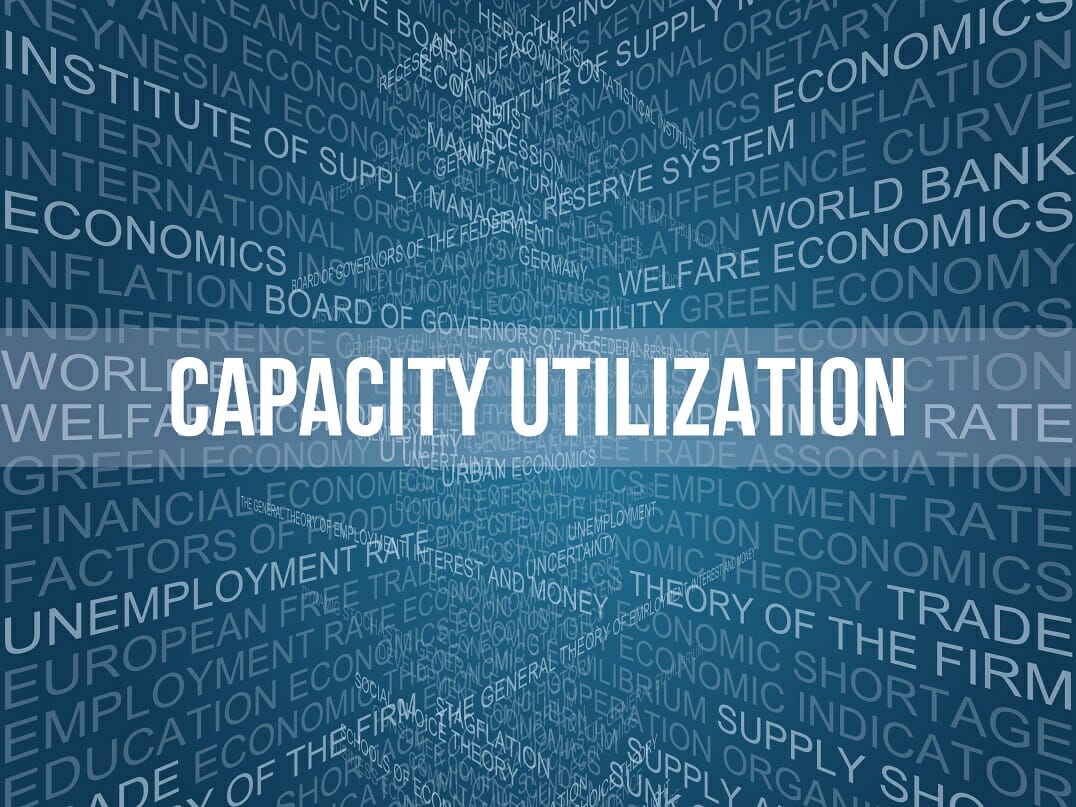



Capacity Utilization Definition Example And Economic Significance
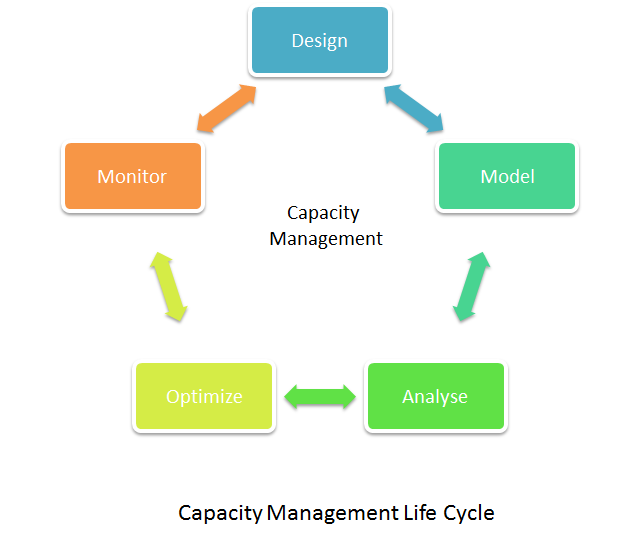



What Is Capacity Management Definition And Faqs Omnisci




A Complete Guide To Product Management Roles Updated For 21 Aha




Capacity Planning Meaning Strategies Importance And Procedure




What Is Aggregate Planning 3 Strategies For Aggregate Production Planning




Digital Transformation Strategy The Bridges To Build
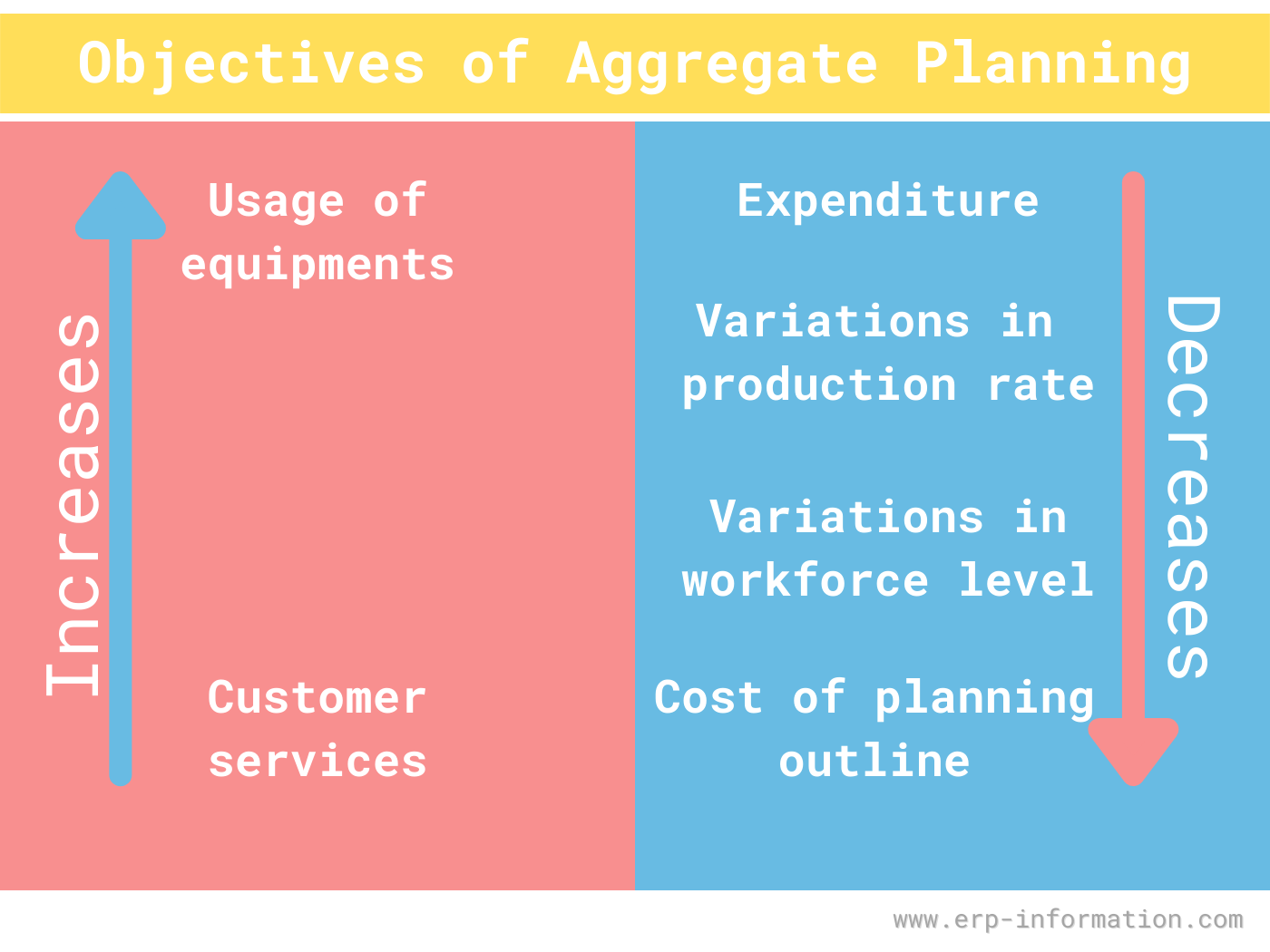



What Is Aggregate Planning 3 Strategies For Aggregate Production Planning




Basic Strategies Level Capacity Strategy Chase Demand Strategy Ppt Download
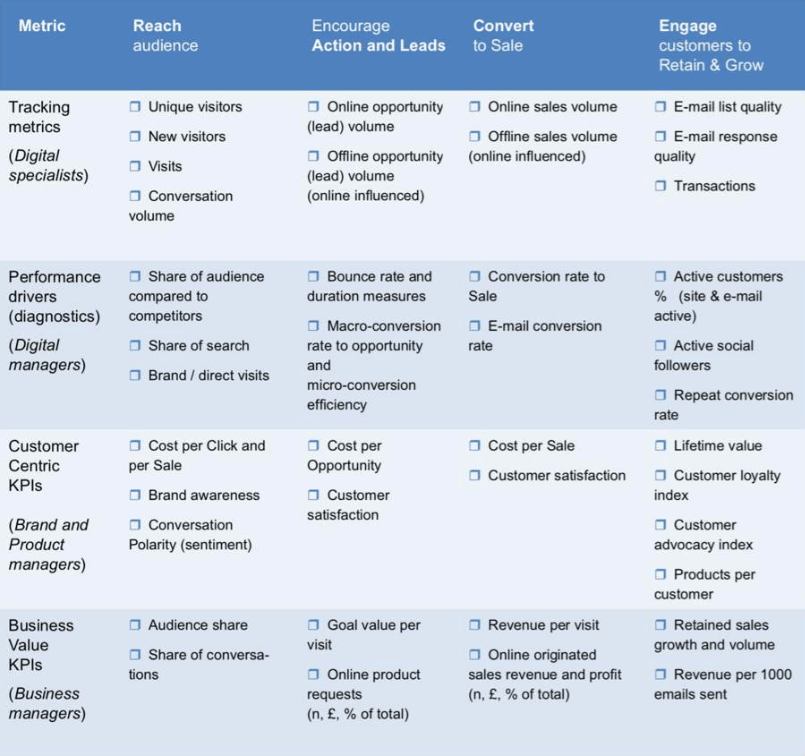



Strategic Analysis Your Ultimate Guide Marketing Templates




Evaluating Capacity Development Better Evaluation
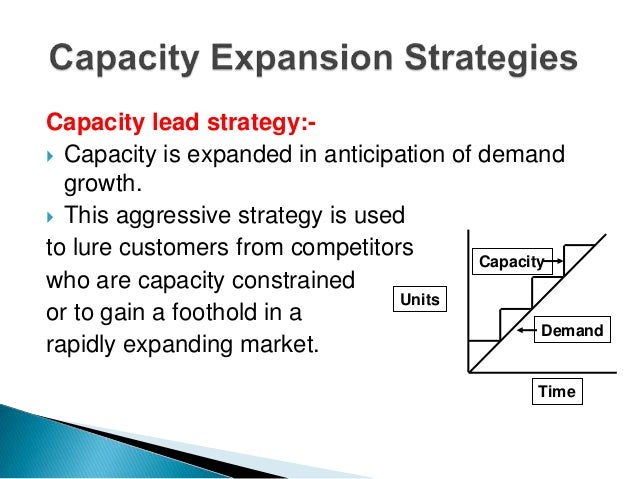



Capacity Management
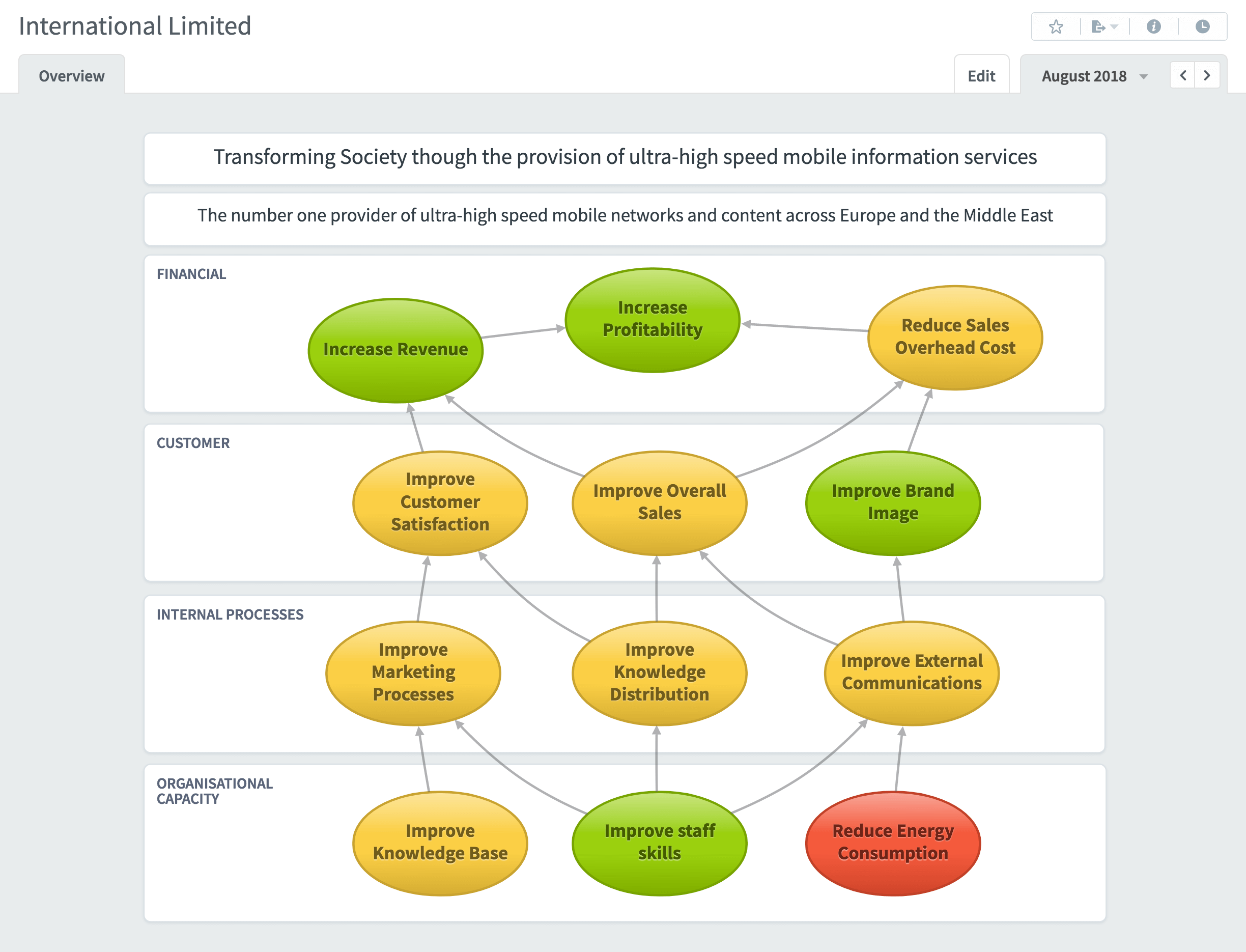



Balanced Scorecard What Is The Balanced Scorecard




Capacity Management




Porter S Generic Competitive Strategies
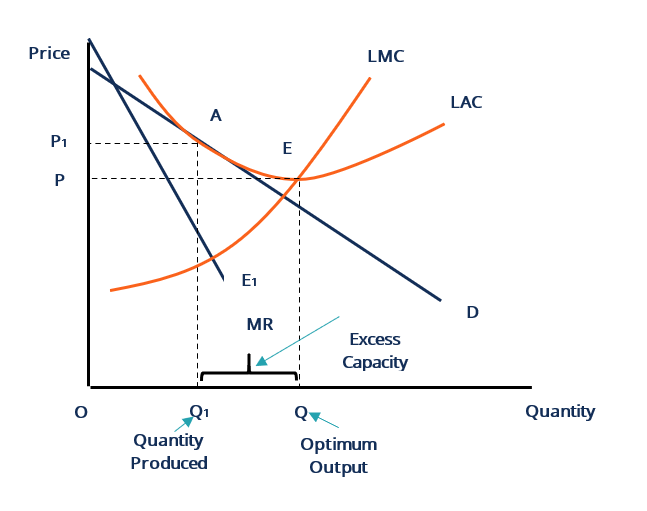



Excess Capacity Overview Causes And How To Monetize It




Capacity Planning Everything You Need To Know Opensense Labs
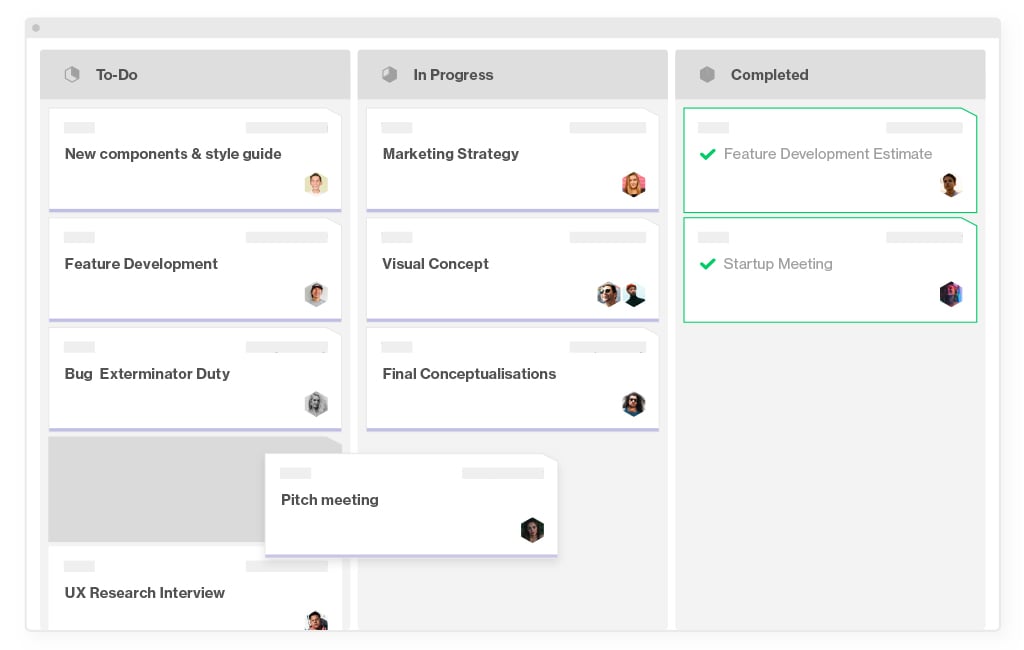



What An Effective Capacity Planning Process Looks Like In 21




Capacity Planning Meaning Strategies Importance And Procedure
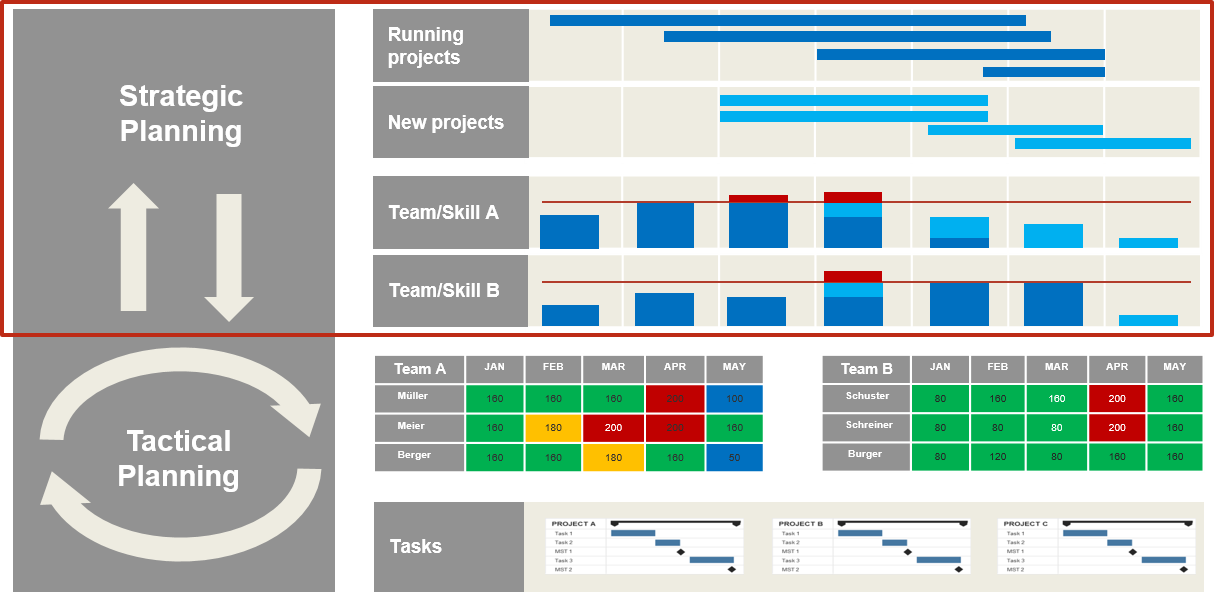



Capacity Planning Everything You Need To Know Opensense Labs
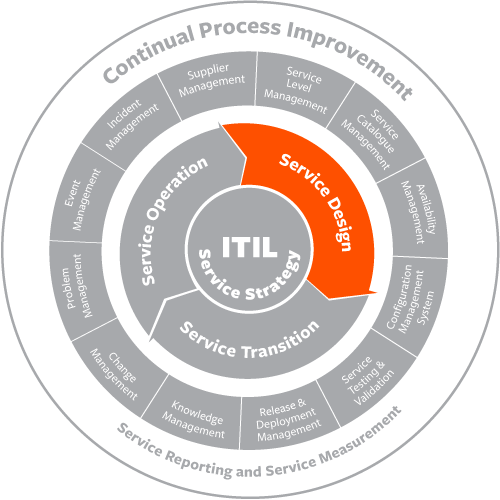



Itil Capacity Management Bmc Software Blogs




Capacity Planning In Project Management 4 Vital Success Factors Update 21




Ability Capability Capacity And Competence Bpi The Destination For Everything Process Related




What An Effective Capacity Planning Process Looks Like In 21




Achieving High Performance Low Cost Logistics Kearney




Capacity Planning Everything You Need To Know Clicktime
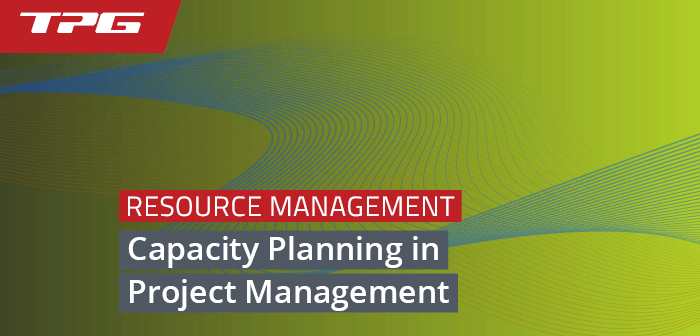



Capacity Planning In Project Management 4 Vital Success Factors Update 21




Aggregate Planning Strategy Organization Levels System Examples Model Type Company System




Operations Strategy With Examples Studiousguy
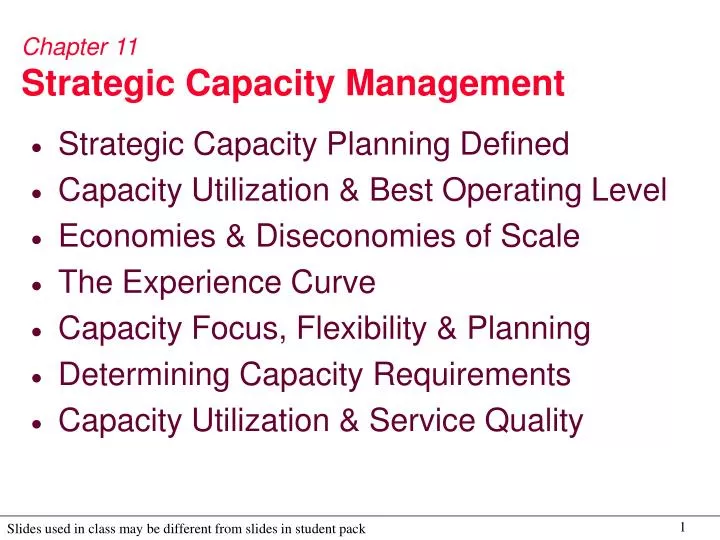



Ppt Chapter 11 Strategic Capacity Management Powerpoint Presentation Id 9169
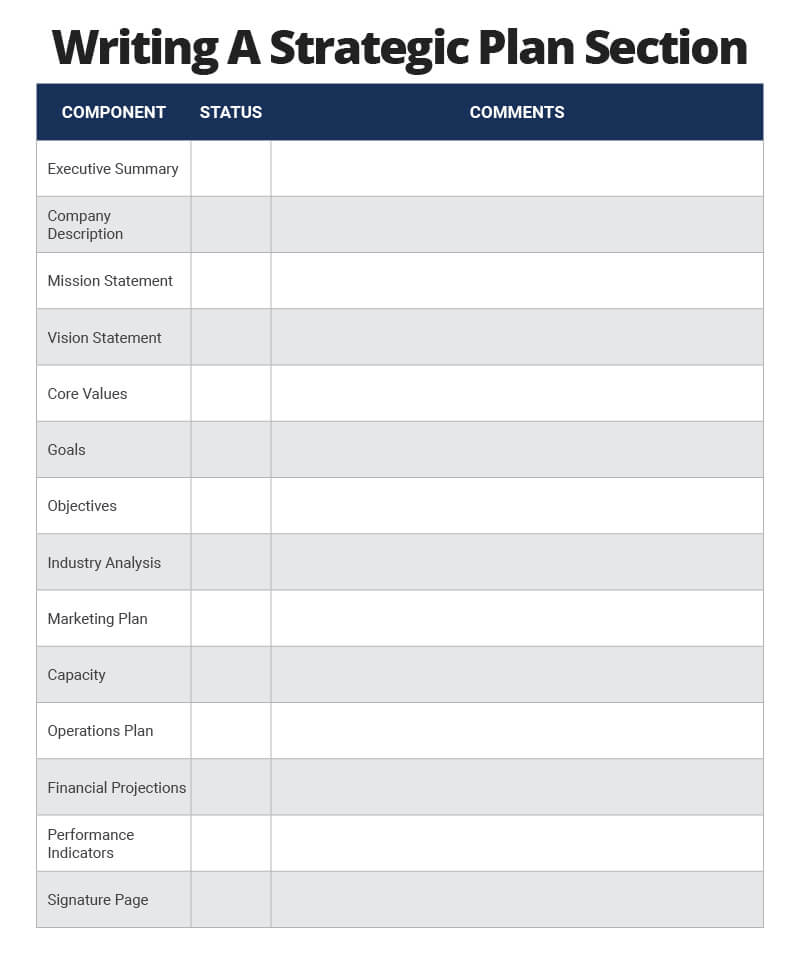



Quick Guide How To Write A Strategic Plan Smartsheet




How To Define Product Features With Examples Aha
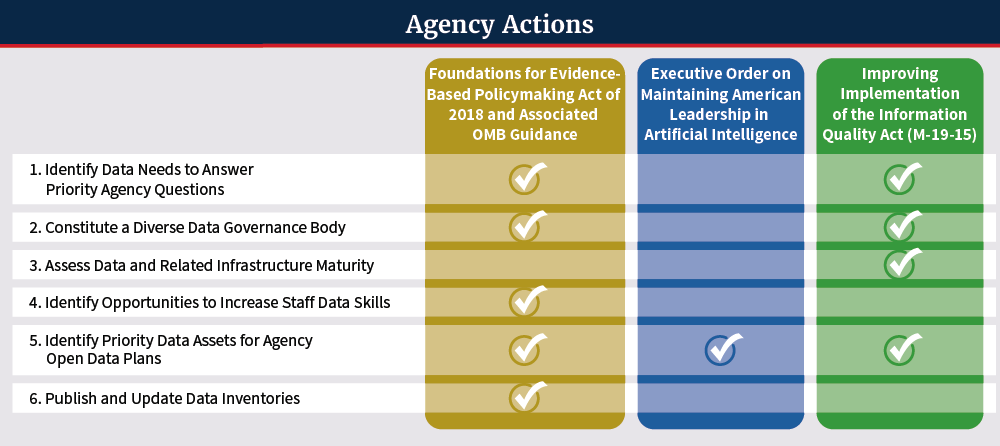



Action Plan Federal Data Strategy
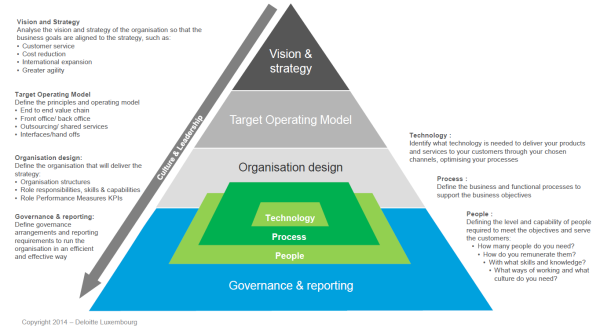



Think Insights Tom What Is A Target Operating Model
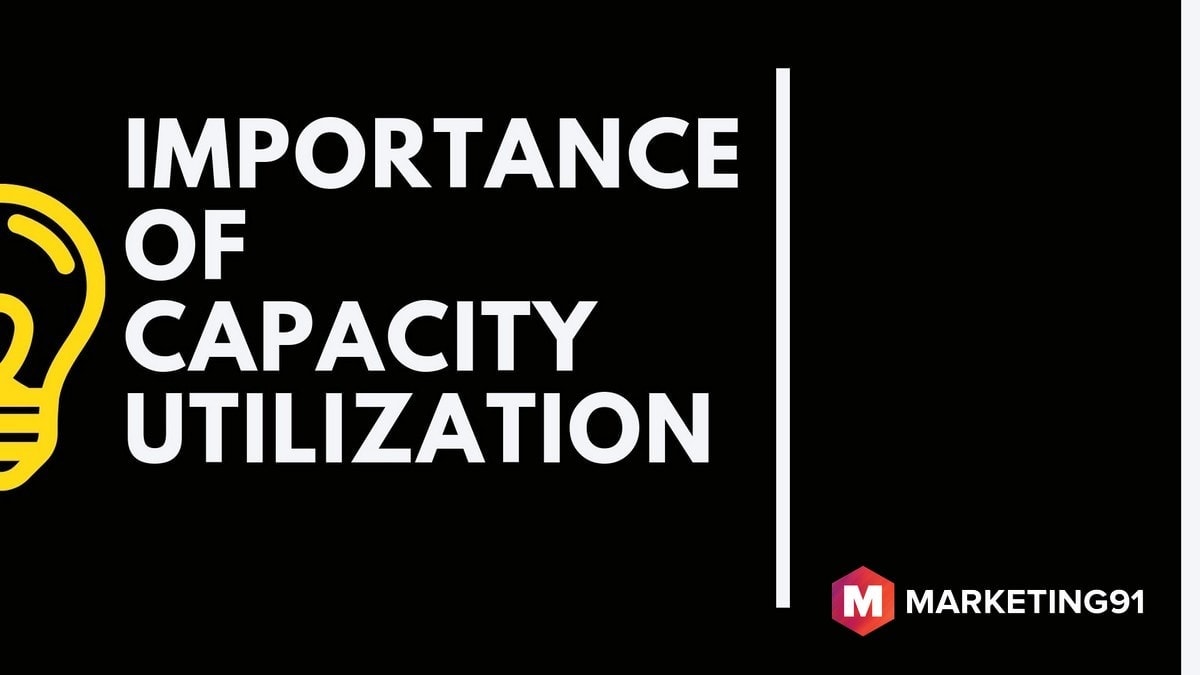



Capacity Utilization Rate Definition Meaning Importance Marketing91




Solved Page 2 Concept Check Questions Please Answer Foll Chegg Com




Capacity Planning In Project Management 4 Vital Success Factors Update 21




Supply Chain Management Wikipedia




Evaluating Capacity Development Better Evaluation




What Is Organizational Development A Complete Guide Aihr Digital




Operations Strategy Handbook
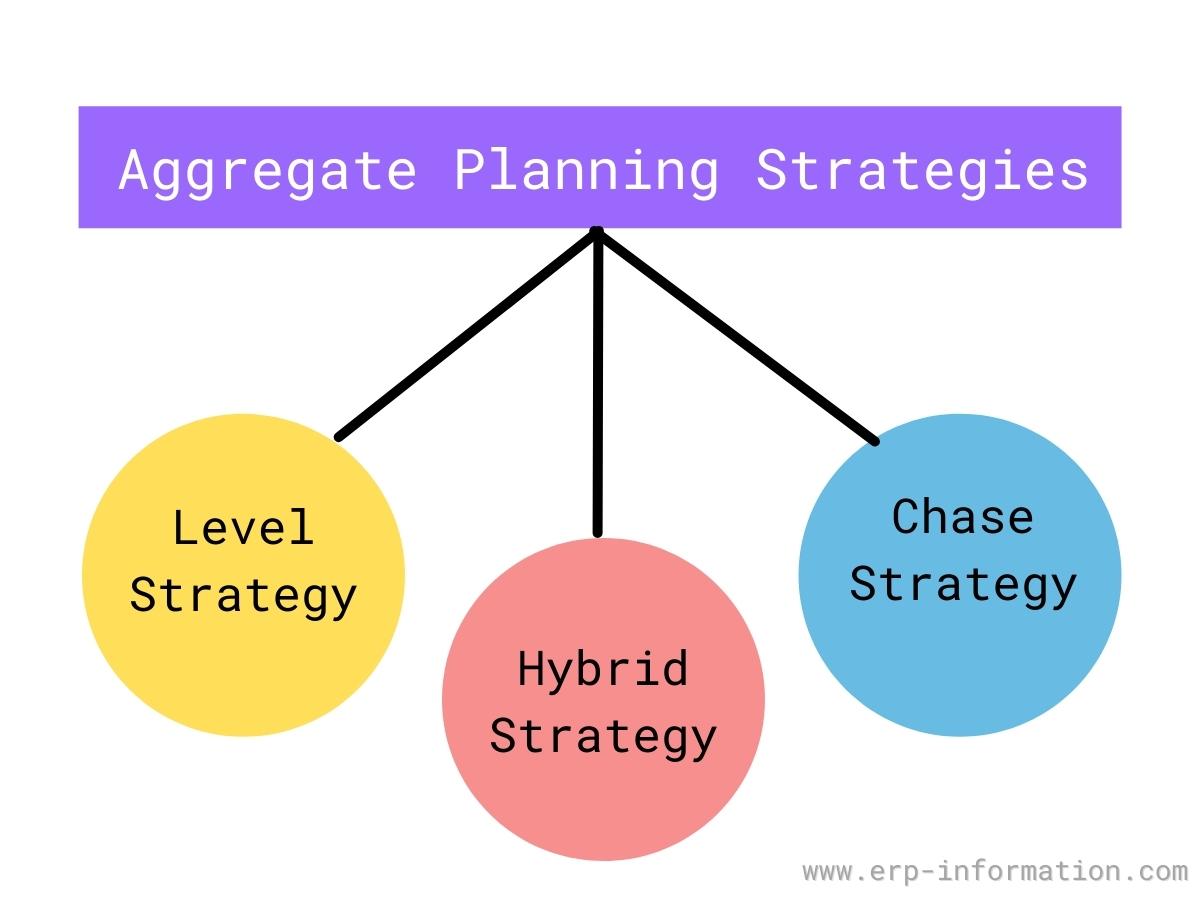



What Is Aggregate Planning 3 Strategies For Aggregate Production Planning
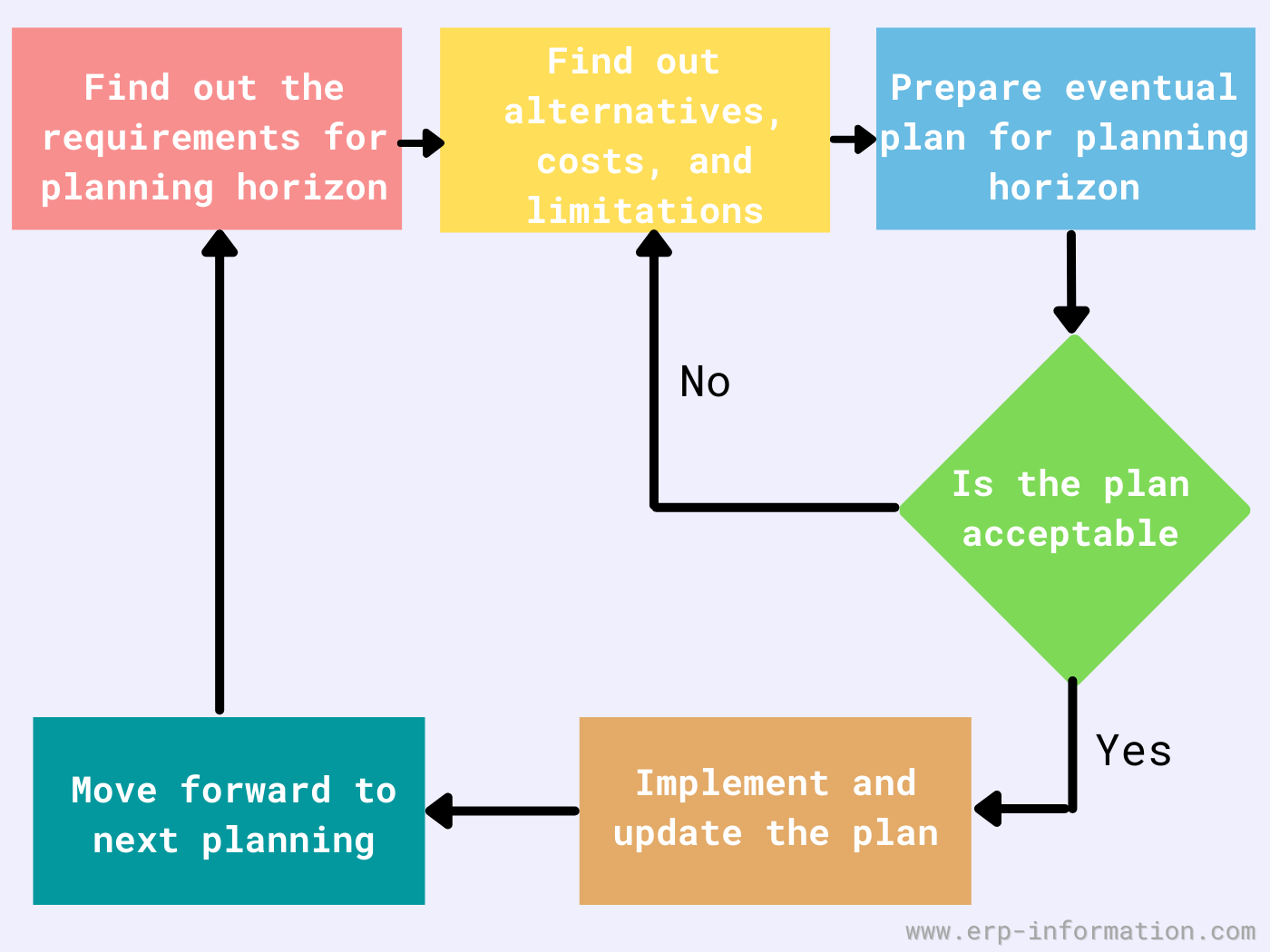



What Is Aggregate Planning 3 Strategies For Aggregate Production Planning



3




Strategic Positioning Strategy For Executives
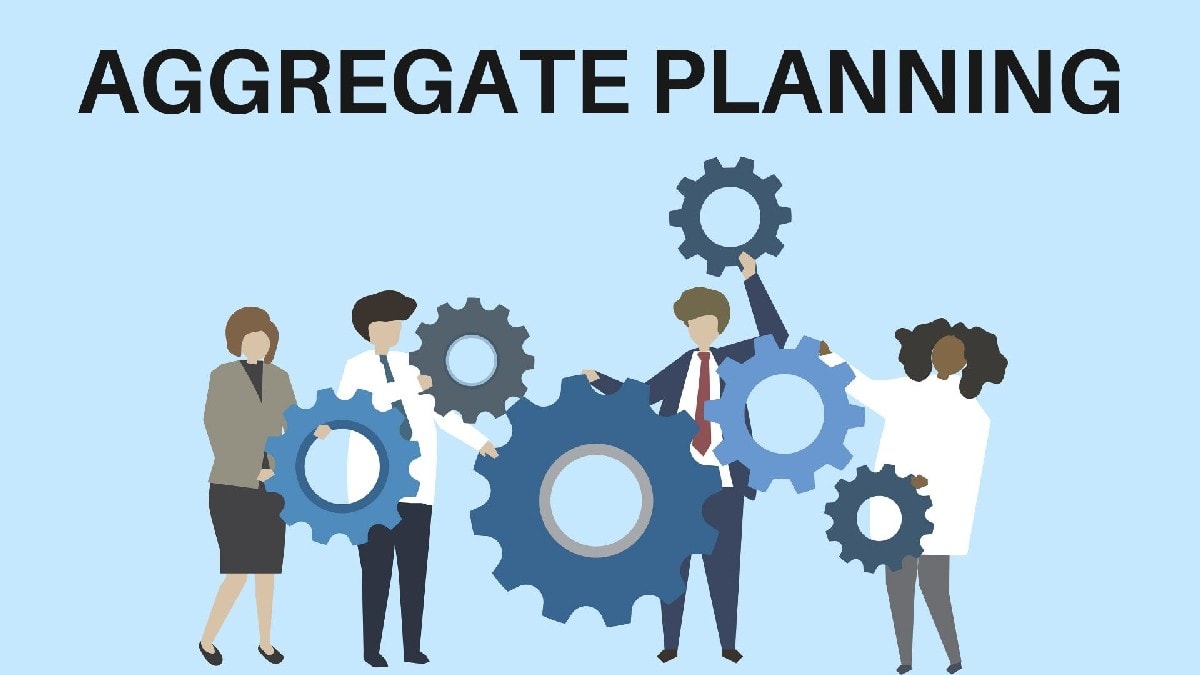



Aggregate Planning Definition Importance Strategies Management And Advantages




Strategic Capacity Planning Capacity Utilization
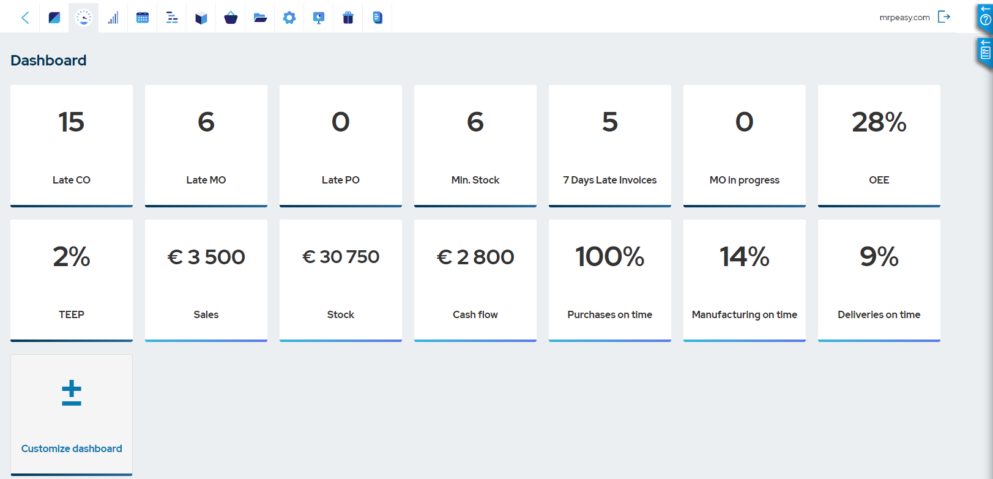



Production Management Definition Importance And Software Solutions
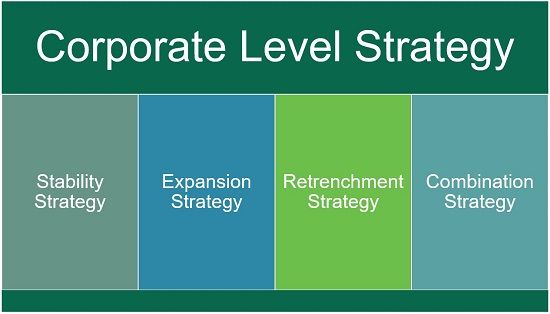



What Is Corporate Level Strategy Definition Salient Features And Classification Business Jargons
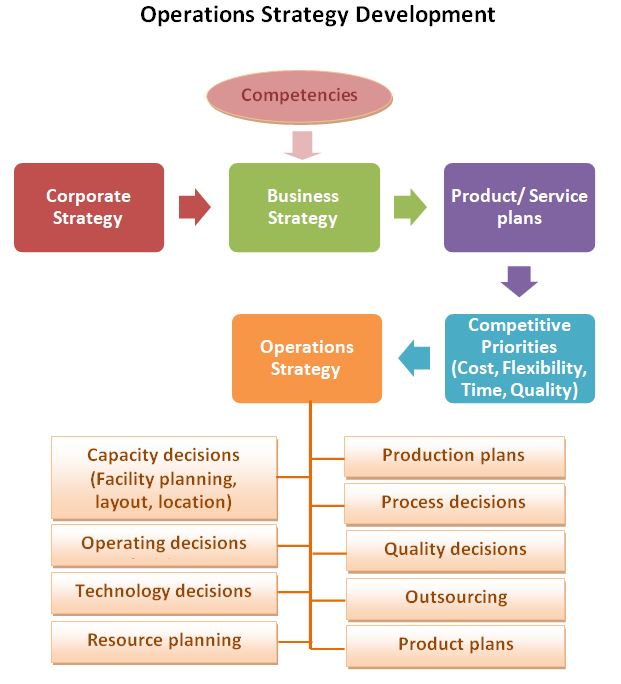



Operations Strategy With Examples Studiousguy




Strategy Under Uncertainty




Strategic Themes Scaled Agile Framework




Increase Manufacturing Production Capacity Vorne




Capacity Planning In Project Management 4 Vital Success Factors Update 21




Capacity Planning Types Lead Lag Average Strategies Video Lesson Transcript Study Com




Capacity Planning Everything You Need To Know Clicktime
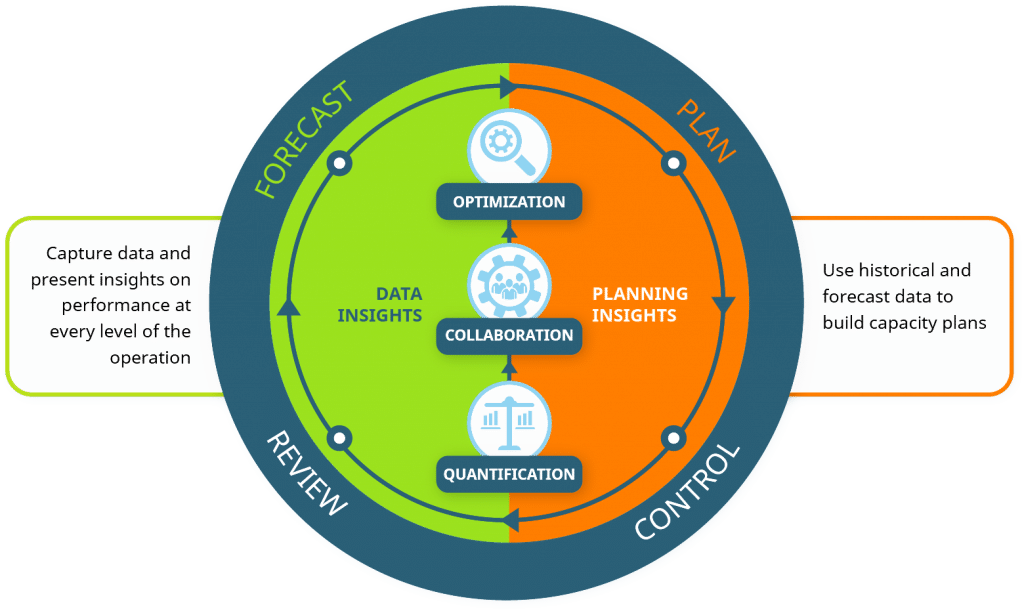



Operations Management Definition Principles And Strategies




Everything About Capacity Planning Strategies Its Benefits




Evaluating Capacity Development Better Evaluation
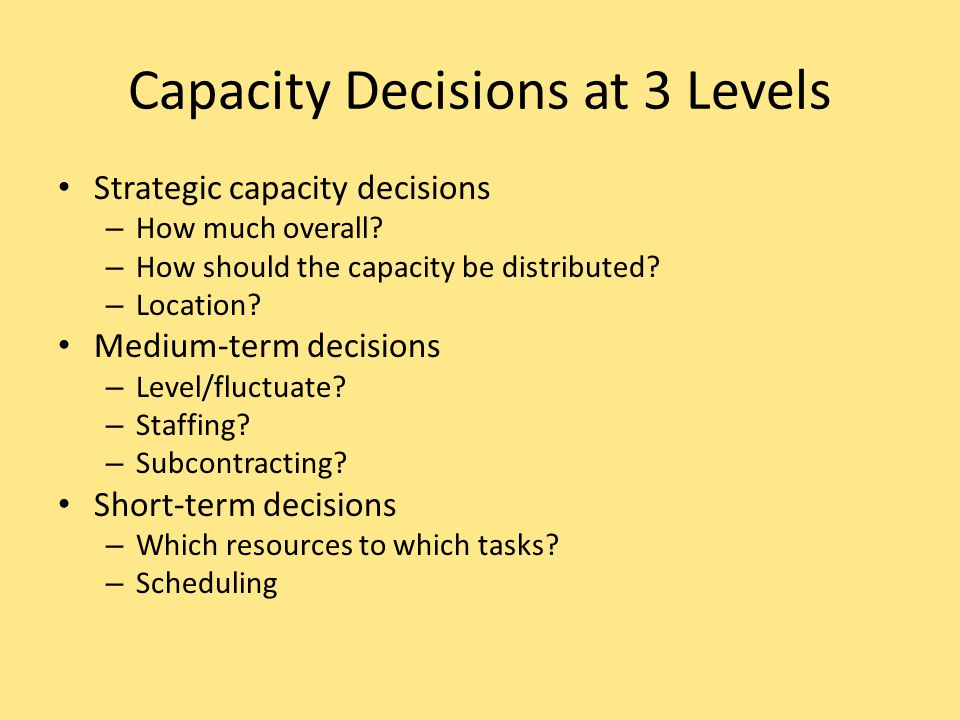



Operations Strategy Capacity Strategy Ppt Video Online Download




3 Types Of Capacity Planning Strategies Valq




Strategic Management Wikipedia
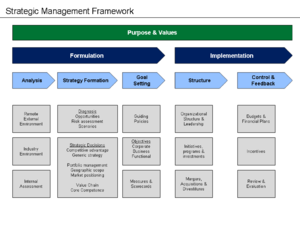



Strategic Planning Wikipedia




Strategic Positioning Strategy For Executives
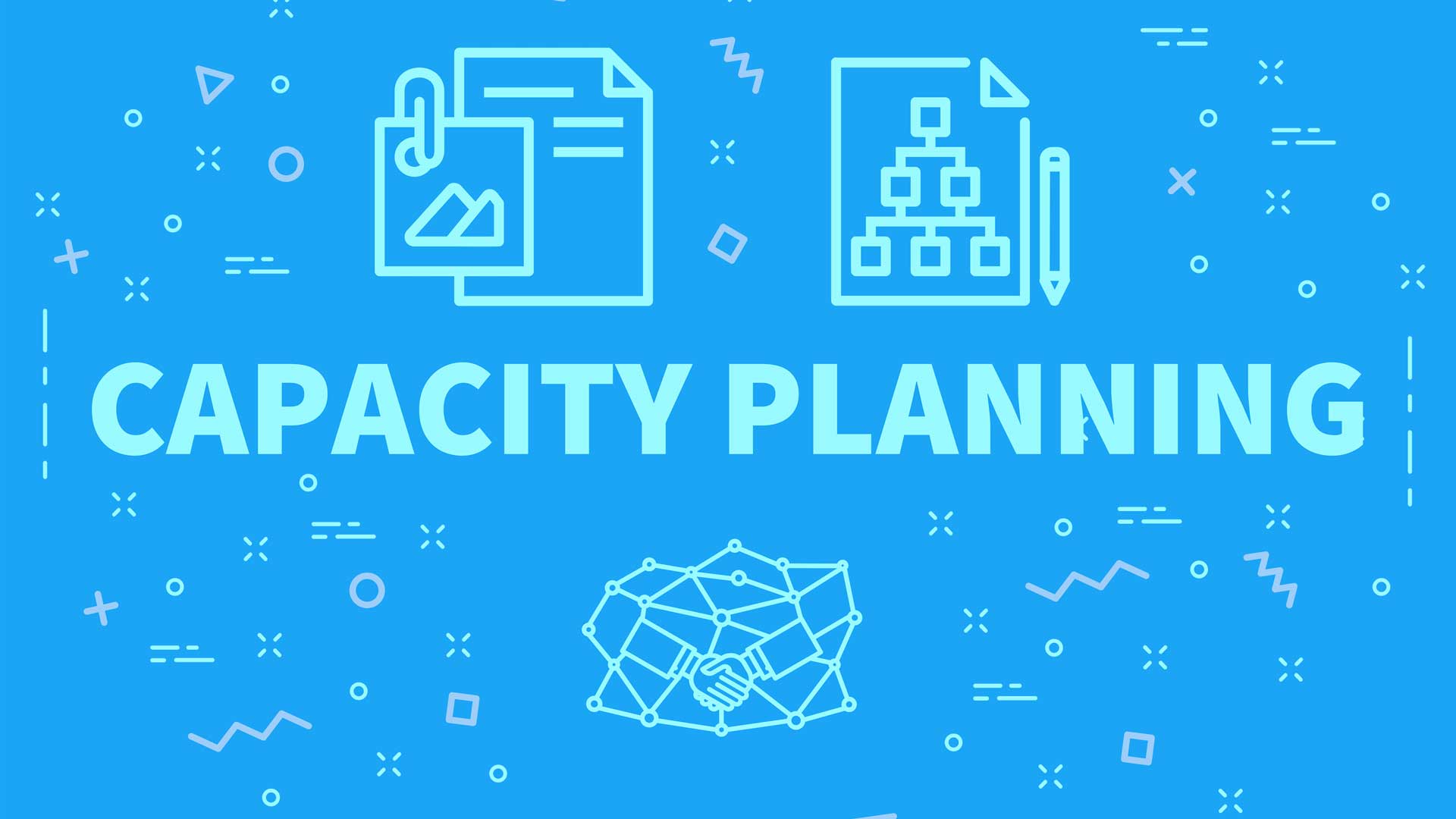



Capacity Planning What Is It And How Do I Implement It Projectmanager Com
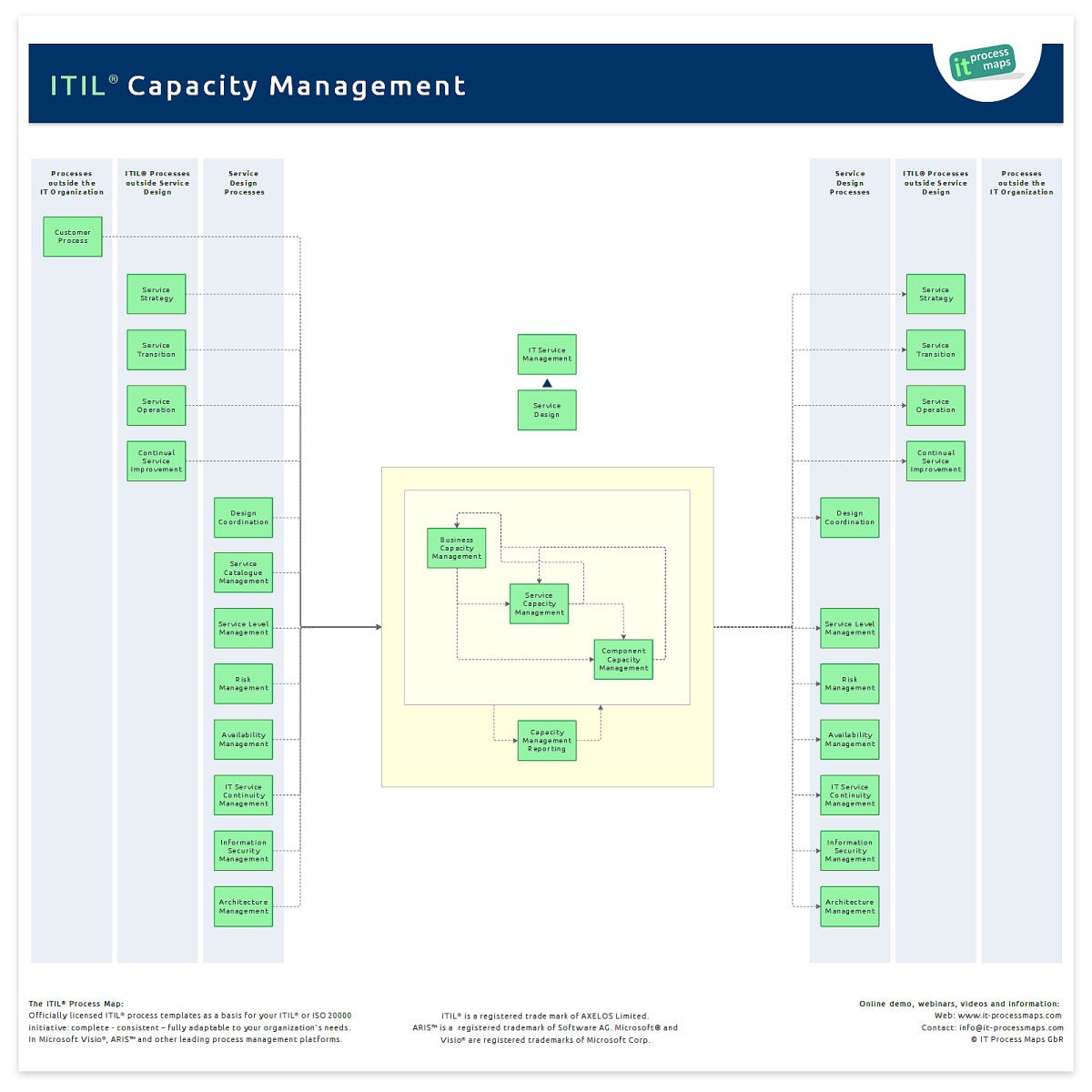



Capacity Management It Process Wiki




Evaluating Capacity Development Better Evaluation



0 件のコメント:
コメントを投稿